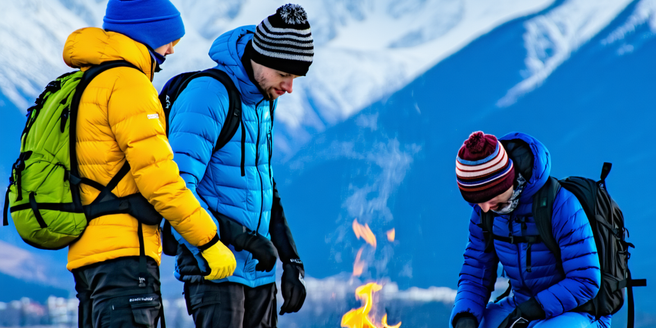
Preparing for Challenging Cold Weather Conditions
Winter expeditions demand thorough preparation to tackle harsh environments. Assessing weather forecasts and understanding the terrain are crucial steps. Equip yourself with the necessary skills and knowledge by taking courses or consulting experts. Clothing layers must be chosen wisely, ensuring you can adapt to fluctuating temperatures. Establish a comprehensive plan that includes contingencies for severe weather. Additionally, practice setting up camp in snowy conditions to hone your adaptability. Preparing mentally for isolation and limited visibility is equally important. Familiarize yourself with local wildlife and potential hazards to mitigate risks. Building a compact yet sufficient emergency kit provides peace of mind, allowing you to focus on enjoying the expedition.
Essential Gear and Supplies for Efficient Travel
For optimal efficiency during winter expeditions, your gear selection is paramount. Begin with insulating clothing designed for wintry climates, prioritizing moisture-wicking materials to keep dry as sweat can chill the body. Durable boots with good ankle support and traction will aid in traversing icy and uneven surfaces. Lightweight, collapsible poles can assist with balance and reduce strain. Ensure your tent features robust weatherproofing for use in intense conditions, integrated with a cold-resistant sleeping bag and compact sleeping pads. Cooking supplies should be portable and reliable in sub-zero temperatures, favoring compact stoves and freeze-dried meals. Moreover, map out supply caching points wherever feasible to minimize pack weight and safeguard against unforeseen shortages, enhancing your travel efficacy.
Scheduling and Prioritizing Activities for Shorter Days
With limited daylight during winter months, effective scheduling and prioritizing become ever-critical components in time management. Begin by identifying key activities essential for each day, setting realistic goals while allowing ample time for unexpected events. Prioritize tasks based on urgency and estimated completion time; allocate more time for complex or critical actions. Consider starting activities shortly after dawn to maximize daylight usage. Adequate rest periods should be sprinkled into your schedule to sustain energy levels throughout the day. If certain tasks remain unfinished, plan to include them on the following day’s agenda promptly. Tracking time for each activity helps in refining your overall scheduling strategy, promoting continuous improvement for future expeditions.
Techniques for Staying Warm and Energized on the Move
To stay warm while maintaining energy levels during winter expeditions, it’s vital to adopt effective strategies. Dress in layers, enabling easy adaptation to temperature shifts while ensuring adequate ventilation to prevent overheating. Keep extremities warm by wearing insulated gloves, hats, and socks, crucial for preventing frostbite. Regular movement generates body heat; incorporate rhythmic breathing to augment oxygen intake, enhancing stamina. Fueling the body with energy-rich snacks and warm fluids throughout the day sustains both warmth and energy, allowing for more extended periods of activity. Incorporate brief, frequent rest breaks in sheltered areas to conserve energy. These techniques, when combined, fortify your endurance against the cold, keeping you energized as you journey through winter landscapes.
Navigating Unpredictable Winter Terrain Safely
When traversing the unpredictable terrain of winter, safety must always be the foremost priority. Begin by understanding the specific weather and terrain conditions of your route, considering avalanche risk, ice thickness, and visibility challenges. Advanced navigational skills become indispensable; use a reliable compass or GPS device and keep updated maps at hand. Stick to known paths whenever possible to minimize risk. Travel with a group for added safety, employing a buddy system to keep track of each other. Carry essential safety gear including a portable shovel and rope. Additionally, continuous monitoring of weather changes is vital, acting swiftly to adjust plans as conditions dictate. By respecting the power of nature, one can skillfully navigate winter terrain with confidence.
Adapting Plans to Weather-Related Delays and Setbacks
Adapting to weather-induced delays on winter expeditions is part and parcel of the challenge. Flexibility in your plans allows you to respond effectively to unexpected conditions. Establish alternative routes and campsites in advance, considering them in your initial plan. Maintain frequent checks on weather updates and pivot accordingly. Prepare mentally and materially for potential hold-ups; extra provisions and a reliable communication device are essential to stay informed and secure. An adaptable mindset encourages problem-solving under pressure, converting setbacks into opportunities for learning. Involving the team in decision-making fosters cohesion and confidence. Ultimately, resilience and preparedness turn potential obstacles into components of a successful expedition.
